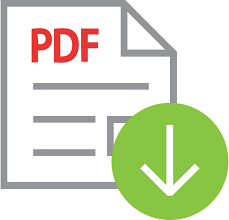Utilization of waste fabric as a learning media to grow students' entrepreneurial soul
 (1),
Neta Dian Lestari (2),
Muhammad Kristiawan (3),
Sudarwan Danim (4),
Rambat Nur Sasongko (5),
(1),
Neta Dian Lestari (2),
Muhammad Kristiawan (3),
Sudarwan Danim (4),
Rambat Nur Sasongko (5),
(1) Universitas PGRI Palembang
(2) Universitas PGRI Palembang
(3) Universitas Bengkulu
(4) Universitas Bengkulu
(5) Universitas Bengkulu
 Corresponding Author
Corresponding Author
DOI : https://doi.org/10.29210/020221611
Full Text:
 Language : en
Language : en
Abstract
References
Ahmad, T., & Danish, M. (2018). Prospects of banana waste utilization in wastewater treatment: A review. Journal of Environmental Management, 205, 330–348. https://doi.org/10.1016/j.jenvman.2017.10.06
Arico, Z., & Jayanthi, S. (2018). Pengolahan Limbah Plastik Menjadi Produk Kreatif Sebagai Peningkatan Ekonomi Masyarakat Pesisir [Processing of Plastic Waste into Creative Products to Improve the Economy of Coastal Communities]. Martabe : Jurnal Pengabdian Kepada Masyarakat, 1(1), 1. https://doi.org/10.31604/jpm.v1i1.1-6
Arsyad, A. (2014). Media pembelajaran [Instructional Media]. Jakarta: Raja Grafindo Persada.
Astuti, R. (2012). Pembelajaran IPA dengan Pendekatan keterampilan proses sains menggunakan metode eksperimen bebas termodifikasi dan eksperimen terbimbing ditinjau dari sikap ilmiah dan motivasi belajar siswa [Science learning with the approach of science process skills using modified free experimental methods and guided experiments in terms of scientific attitudes and students' learning motivation]. Kolisch 1996, 49–56.
Azwar, S. (2014). Metode Penelitian [Research methods]. In Pustaka Belajar.
Bishop, R. H. (2016). What is innovation? Paper Presented at 2016 EDI, San Francisco, CA. https://Peer.Asee.Org/27411. https://doi.org/10.1142/9789811243233_0001
Conilie, M., Farihah, U., & Nasution, N. E. A. (2021). Utilization of plastic and fabric waste into economic valued products to minimize household waste. IOP Conference Series: Earth and Environmental Science, 747(1). https://doi.org/10.1088/1755-1315/747/1/012107
Doifode, S. K., & Matani, A. G. (2015). Effective Industrial Waste Utilization Technologies towards Cleaner Environment. International Journal of Chemical and Physical Sciences, 4, 536–540.
Fitria, S., & Yustisya, P. Z. (2021). Urgensi produksi batik ramah lingkungan dalam mnembus potensi pasar internasional [The urgency of environmentally friendly batik production in penetrating the international market potential]. 1–14.
Fitriyani, G. (2019). Tinjauan Fiqh Siyasah Terhadap Pelaksanaan Peraturan Daerah Kota Bandar Lampung Nomor 5 Tahun 2015 Tentang Pengelolahan Sampah (Studi di Dinas Lingkungan Hidup Kota Bandar Lampung) [Fiqh Siyasah Review on the Implementation of Bandar Lampung City Regional Regulation Number 5 of 2015 concerning Waste Management (Study at the Bandar Lampung City Environmental Service)] (Doctoral dissertation, UIN Raden Intan Lampung).
Habibah, E., Novianti, F., & Saputra, H. (2020). Analisis Terhadap Faktor yang Berpengaruh Terhadap Penerapan Kebijakan Pengelolaan Sampah di Yogyakarta Menggunakan Pemodelan Sistem Dinamis [Analysis of Factors Influencing the Implementation of Waste Management Policies in Yogyakarta Using Dynamic System Modeling]. Jurnal Analisa Sosiologi, 9.
Hadiyati, E. (2012). Kreativitas Dan Inovasi Pengaruhnya Terhadap Pemasaran Kewirausahaan Pada Usaha Kecil [Creativity and Innovation Influence on Entrepreneurial Marketing in Small Business]. Jurnal Inovasi Dan Kewirausahaan, 1(3), 135–151. https://journal.uii.ac.id/ajie/article/view/2832
Hamdani. (2017). Strategi Belajar Mengajar [Teaching and Learning Strategy]. In Pustaka Setia.
Hartiningrum, E. S., Maarif, S., & Rakhmawati, N. (2021). Pemanfaatan Limbah Kain Perca Menjadi Produk Bernilai Ekonomis [Utilization of Patchwork Waste into Economic Value Products]. Abdimas Singkerru, 1(2), 134–140.
Lestari, N. D., & Masnunah, M. (2019). Analysis of entrepreneurship student activitiesat the bazaar 30 palembang special cuisine icons. International Journal of Scientific and Technology Research, 8(7), 505–510.
Lestari, N. D., & Toyib, M. (2017). Limbah Lingkungan Sebagai Media Pembelajaran Mahasiswa Universitas PGRI Palembang [Environmental Waste as Learning Media for Students at PGRI Palembang University]. Faktor Jurnal Ilmiah Kependidikan, 4(3), 227–240.
Mair, J., Battilana, J., & Cardenas, J. (2012). Organizing for Society: A Typology of Social Entrepreneuring Models. Journal of Business Ethics, 111(3), 353–373. https://doi.org/10.1007/s10551-012-1414-3
Masnunah, N. D. L., & Aradea, R. (2020). Pemanfaatan Limbah Kain Khas Sumatera Selatan Sebagai Media Pembelajaran Kewirausahaan [Utilization of South Sumatra Typical Fabric Waste as Entrepreneurship Learning Media]. Profit, 7(2), 131–145. https://ejournal.unsri.ac.id/index.php/jp/article/view/12237/pdf
Munir, M. M., Thoyyibah, D., & Ni’mah, L. (2021). Pemanfaatan Limbah Kain Perca Menjadi Produk Bernilai Ekonomis Bagi Ormas PKK Desa Bugel [Utilization of Patchwork Waste into Economic Value Products for PKK Ormas in Bugel Village]. Abdimas Singkerru, 1(2), 134–140.
Purbadi, Y. D., & Lake, R. C. (2019). Konsep Kampung-Wisata Sejahtera, Kreatif, Cerdas dan Lestari Berkelanjutan [The Concept of Prosperous, Creative, Smart and Sustainable Tourism Village]. EMARA: Indonesian Journal of Architecture, 5(1), 12–23. https://doi.org/10.29080/eija.v5i1.641
Rathinamoorthy, R. (2018). Sustainable apparel production from recycled fabric waste. In Sustainable Innovations in Recycled Textiles (pp. 19–52). Springer.
Rizos, V., Behrens, A., Van der Gaast, W., Hofman, E., Ioannou, A., Kafyeke, T., & Topi, C. (2016). Implementation of circular economy business models by small and medium-sized enterprises (SMEs): Barriers and enablers. Sustainability (Switzerland), 8(11). https://doi.org/10.3390/su8111212
Septiawati, R., Murhad, A., Dinata, D., Anggainy, R., Sari, W., & Febrianty, F. (2019). Pemanfaatan Limbah Kain Perca Sebagai Alternatif Peluang Usaha [Utilization of Patchwork Waste as an Alternative Business Opportunity]. Comvice : Journal of Community Service, 3(1), 1–8. https://doi.org/10.26533/comvice.v3i1.168
Sugiharto, DYP, & Kusumandari, R. (2016). Model Development in the Context of Vocational Village Community Empowerment in Central Java. International Journal of Information and Education Technology, 6(7), 564–569. https://doi.org/10.7763/ijiet.2016.v6.752
Suryani, H., & Gufran Darma Dirawan, S. T. and M. Y. (2017). Model Pelatihan Motivation Innovative, Development, Achievement (MIDA) dalam pengelolaan limbah industri jadi [Motivation Innovative, Development, Achievement (MIDA) Training Model in the management of finished industrial waste]. In Journal of Chemical Information and Modeling.
Syuraini, S., & Yolanda, Y. (2019). Use of Learning Media in Entrepreneurship Subjects Equality Education Paket C. Kolokium: Jurnal Pendidikan Luar Sekolah, 7(1), 48–52. https://doi.org/10.24036/kolokium-pls.v7i1.18
Thompson, A., Peteraf, M., Gamble, J., Strickland III, A. J., & Jain, A. K. (2013). Crafting & executing strategy 19/e: The quest for competitive advantage: Concepts and cases. McGraw-Hill Education.
Vatankhah, N., & Moghaddam, K. R. (2015). Recognizing the students’ entrepreneurial spirit: the case of Agricultural College, Shiraz University. Iranian Agricultural Extension and Education Journal, 11(1), 59–70. https://www.cabdirect.org/cabdirect/abstract/20193120524
 Article Metrics
Article Metrics
 Abstract Views : 437 times
Abstract Views : 437 times
 PDF Downloaded : 0 times
PDF Downloaded : 0 times
Refbacks
- There are currently no refbacks.




